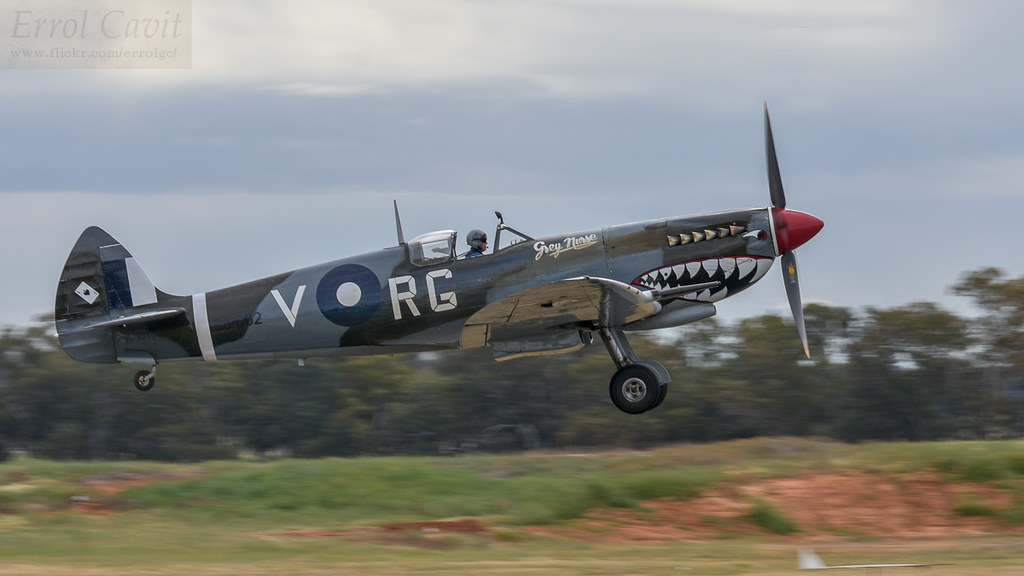Shadow Master
Banned
I don't know where the spitfires didn't serve in the PTO, but they did go one on one with the model 32 over Darwin and New Guinea. I was shocked to learn that the Hurricane actually killed more 109's than the spitfires!
No Spits in Malaya during WW2! Pretty much no Spits outside of the UK and Malta until mid/late 42!
If no Spits then it would be replaced with Aircraft X (whatever ac replaced Spitfire in this hateful ATL) or more Hurricanes - and they used older Mk1A hurricanes so again they were surplus to front line requirements at the time that the CAM units were formed
- 79 Squadron Royal Australian Air Force
- 85 Squadron Royal Australian Air Force
- 452 Squadron Royal Australian Air Force
- 457 Squadron Royal Australian Air Force
I don't know where the spitfires didn't serve in the PTO, but they did go one on one with the model 32 over Darwin and New Guinea. I was shocked to learn that the Hurricane actually killed more 109's than the spitfires!
457 Squadron RAAF
Short version: the pilots had to learn a different style of fighting and forget about dogfighting as they learned it in the BoB. The ground crews were severely handicapped by parts shortages and the northern Australian climate. A whole host of factors meant a different war for the Spitfires in the Northern territories. The learning curve was incredibly steep with the IJN and especially the IJA being very harsh teachers. As always, it is the human (and some material) factors that explain the differences between GB and Australia. Always bear that in mind when one compares the performance of the RAAF Spitfire squadrons and the RAF, too, with the China War Japanese veterans. The Japanese were used to and ready for the conditions encountered. The Australians and British, like the Americans, had to spend a good two years to catch on and catch up. When they did, they showed they could give better than they got.
 Grey Nurse scramble by Errol Cavit, on Flickr
Grey Nurse scramble by Errol Cavit, on FlickrSupermarine and its parent vickers would produce a fighter. Design was not down to one man. I suspect the only irreplaceable person here is Dowding.Methinks that we agree that Uk will have good & great fighters by early 1943 at least. The problem is: who is to cover years of 1941 and 1942? My picks, again:
- 1-seat Defiant with better radiators (not that awful 'airbrake-type' radiators) and wing guns
- Gloster F.5/34 with Merlin
- Whirlwing as improved as it gets
- Merlinized P-40 and/or MB.2 and/or Mustang and/or Gloster F.9/37
Or some, less that obvious - 1-engined fighter with Hercules on board; D-H gets a job; Percival gets a job; Hurricane with wings from Gloster F.5; jet fighter??
Quite the contrary. Whilst it took some thought and care as the carburettors and undercarriage wanted to use the same space, Westland did tell the Air Ministry that Merlins could be fitted. Also Allisons.the Whirwind would suffer the same problems, because of the engine; and the fighter was too small to simply slap Merlins on it.
Quite the contrary. Whilst it took some thought and care as the carburettors and undercarriage wanted to use the same space, Westland did tell the Air Ministry that Merlins could be fitted. Also Allisons.
With Bristol's problems with the Hercules, without the spitfire perhaps there could be an earlier merlin powered Beaufighter?
Supermarine and its parent vickers would produce a fighter. Design was not down to one man. I suspect the only irreplaceable person here is Dowding.
My money goes on the Hawker Tornado being pushed harder... ready for production late '39 in limited service May/June '40. Eight squadrons available for the BoB and possible knock on of Tempest and Fury each appearing a year or so earlier than OTL.
As per... the vulture.Trick being - what engine in the front of Tornado of 1940?